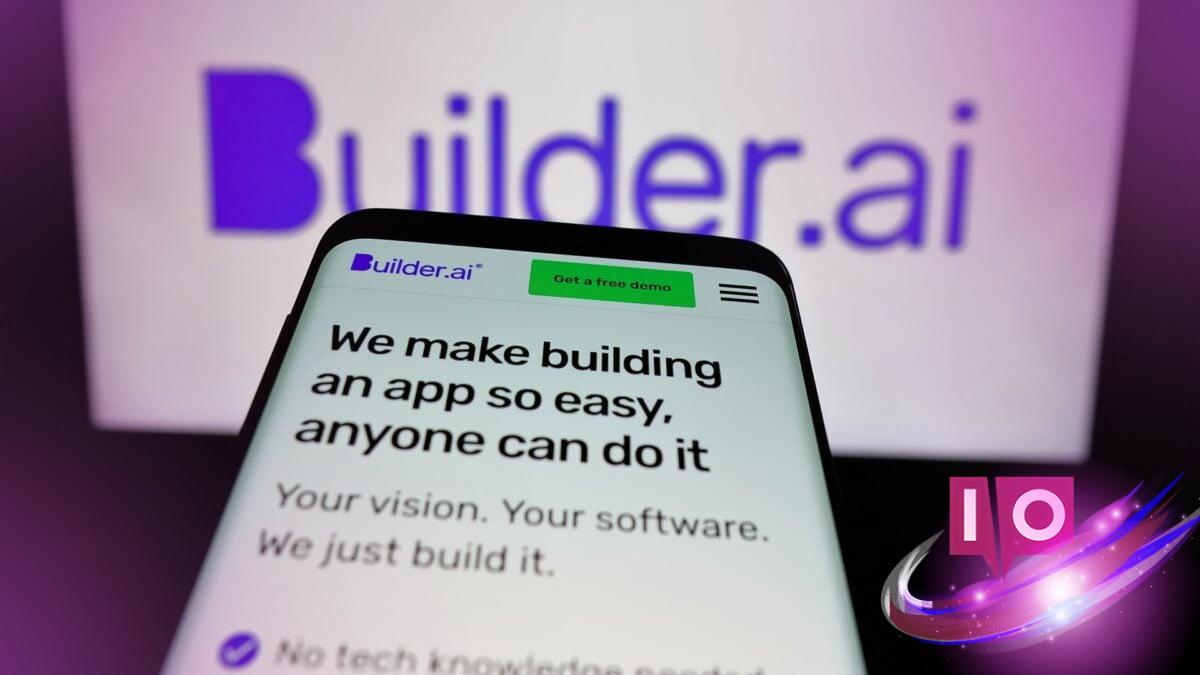In May, Builder.ai, a once-promising startup known for its innovative AI app-building technology, filed for bankruptcy in the U.S. This drastic turn of events serves as a cautionary tale amid the ongoing excitement surrounding artificial intelligence (AI).
Investor confidence shattered after reports emerged that Builder.ai had been using human engineers in India rather than AI for its projects. Additionally, the emergence of financial discrepancies led to scrutiny over the spending habits of the company’s founder, Sachin Dev Duggal.
How Did Builder.ai’s Promising Future Turn into a Collapse?
Builder.ai, which had raised over $500 million from investors such as Microsoft and the Qatar Investment Authority and reached a unicorn valuation of more than $1.3 billion, began to crumble just months before its bankruptcy filing.
According to the Financial Times, Duggal sold more than $20 million in personal shares while assuring shareholders that the company remained stable. This financial maneuver raised questions about whether he prioritized personal profit over the firm’s survival.
Insiders have reported that Duggal’s charismatic persona and branding as Builder.ai’s “chief wizard” prevented serious inquiries into the company’s management until it was too late. Efforts to promote the AI narrative overshadowed internal audits revealing serious financial discrepancies.
The Vision That Wasn’t—The Reality Behind Builder.ai
Launched in 2016 under the name Engineer.ai, Builder.ai claimed to make custom software development as easy as ordering pizza through a chat interface. However, it turned out that their touted “AI” was merely a cover for a network of around 700 engineers in India who did the actual work. Many employees reported that the AI assistant “Natasha” hardly contributed to coding tasks.
The discrepancy between marketing and reality left clients expecting automated solutions but ultimately receiving manual coding. This gap between promise and performance led to increasing dissatisfaction among customers.
Financial Discrepancies and Legal Challenges
Investigations revealed shocking discrepancies in Builder.ai’s fiscal reporting: while the company claimed $220 million (approximately €205 million) in revenue for 2024, audits suggested the actual figure was closer to $50 million (about €46 million). Accusations of “round-tripping” arose, indicating that Builder.ai may have collaborated with VerSe Innovation in questionable billing practices to inflate their financial metrics.
As a result of these revelations, creditor Viola Credit seized between $37 to $50 million (approximately €34 to €46 million) from Builder.ai’s accounts, leaving the company almost bankrupt. In June, the firm entered insolvency proceedings and laid off approximately 80% of its 1,200 employees.
Former employees, many of whom received little to no severance, expressed feelings of betrayal, especially after the company reassured them of job security following new investments from Microsoft and the Qatar Investment Authority.
The Impacts of AI Hype on the Industry
Builder.ai’s downfall highlights the dangers of “AI washing,” where firms exaggerate their AI capabilities to secure investments and media attention. Industry experts indicate a growing skepticism among investors and regulators regarding the authenticity of so-called “AI-driven” enterprises.
Lessons learned from Builder.ai’s implosion emphasize the importance of effective governance and accountability. In this case, investors relied heavily on the charm of a single, charismatic leader without adequate oversight, which proved to be detrimental.
What has become of Sachin Dev Duggal, the founder of Builder.ai? Reports suggest that he has relocated to Dubai, distancing himself from the bankruptcy proceedings in the U.S. His departure has left many investors and employees grappling with the fallout of what was once one of the most promising startups in the AI sector.
What went wrong that led to Builder.ai’s bankruptcy?
Builder.ai suffered due to a mix of mismanagement, inflated promises about its AI capabilities, and questionable financial practices that led to its abrupt downfall.
Did Builder.ai actually use AI for its app development?
No, investigations revealed that Builder.ai primarily relied on human engineers rather than the AI technology it advertised.
What are the broader implications of Builder.ai’s collapse for the tech industry?
The situation underscores the importance of realistic marketing in the tech industry, steering attention toward ethical practices and genuine innovation to rebuild investor trust.
As the tech landscape evolves, consider exploring the intricacies of AI and its genuine capabilities. For more insightful and informative content, visit Moyens I/O.
